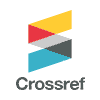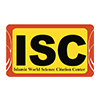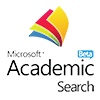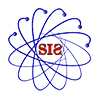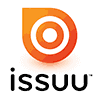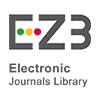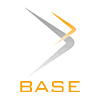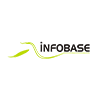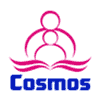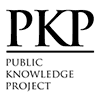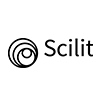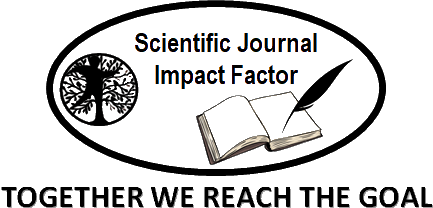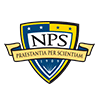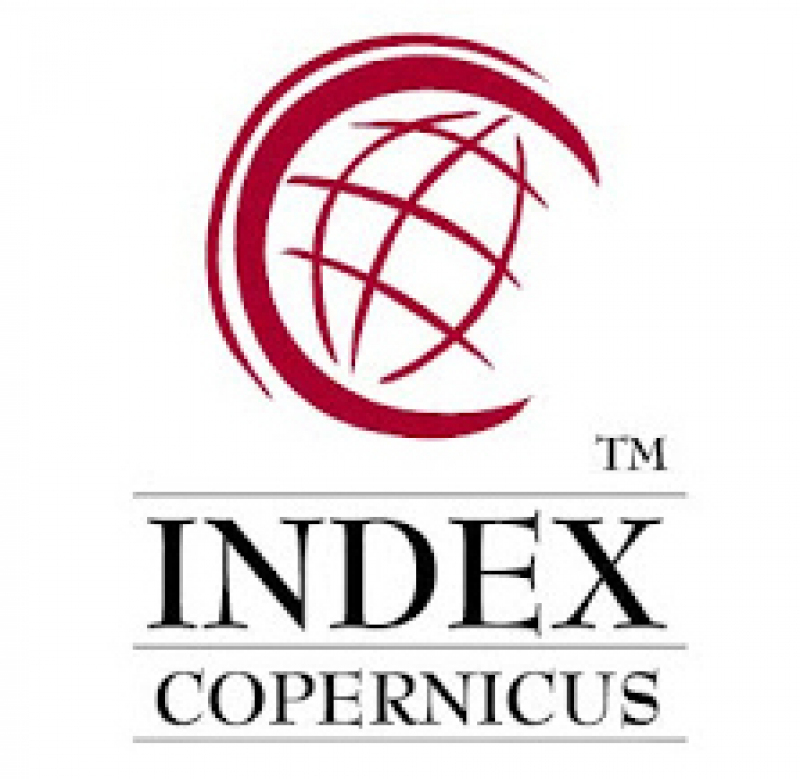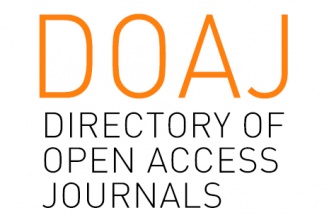Development of Interactive Learning Multimedia Based on Problem-Based Learning Oriented Toward Students’ Self-Efficacy
Abstract
This study aims to: (1) produce interactive learning multimedia characterized by problem-based learning and oriented toward students’ self-efficacy, and (2) describe the feasibility of the developed multimedia in terms of validity, practicality, and effectiveness. The study employed a research and development approach using the ADDIE model, encompassing the stages of analysis, design, development, implementation, and evaluation. The research subjects consisted of 21 junior high school students selected through purposive sampling. Data were collected using validation sheets, teacher and student practicality assessments, classroom observation sheets, and a self-efficacy questionnaire. Validity and practicality were analyzed using qualitative value standards. The product was considered effective if there was an increase in the mean score from pre-test to post-test on self-efficacy. Effectiveness was analyzed using paired sample t-tests. The developed product, called ProSmart, is interactive learning multimedia designed to support students’ self-efficacy in learning. This multimedia includes quizzes, instructional videos, and problem-based activities. Features consist of an introduction page, structured learning steps, interactive videos, and interactive quizzes. The results indicate that: (1) the multimedia supports self-efficacy by embedding motivational statements to strengthen students’ confidence and providing interactive displays of objectives, materials, and engaging quizzes; (2) the multimedia was considered valid in terms of content and highly valid in terms of media; (3) it was rated highly practical by teachers, practical by students, and the classroom implementation was also rated highly practical; (4) there was a significant improvement in students’ self-efficacy. Therefore, the multimedia developed meets the criteria of being valid, practical, and effective.
Keywords
Full Text:
PDFReferences
Akbar, S. (2016). Instrumen Perangkat Pembelajaran. PTRemajaRoesdakarya.
Alvianti, S. D., Shodiqin, A., & Dwijayanti, I. (2023). Analisis Kemampuan Pemecahan Masalah Matematis Ditinjau dari Self Efficacy Siswa SMP Kelas VIII. Imajiner: Jurnal Matematika Dan Pendidikan Matematika, 5(3), 202–203.
Anggalia, F., Bharata, H., & Rosidin, U. (2020). Developing PBL To Improve Mathematical Problem Solving And Self Efficacy. International Journal of Trends in Mathematics Education Research, 3(1), 24–30. https://doi.org/10.33122/ijtmer.v3i1.129
Angraini, F., Erita, S., Oktafia, M., & Nasution, E. (2023). Pengembangan Media Pembelajaran Flipchart Berbasis Etnomatematika. Jurnal Penelitian Matematika Dan Pendidikan Matematika, 6(2), 197.
Aprilita, T. D., & Handican, R. (2023). Persepsi Siswa Terhadap Implementasi Model Problem Based Learning pada Mata Pelajaran Matematika. Griya Journal of Mathematics Education and Application, 3(3), 546–560. https://doi.org/10.29303/griya.v3i3.353
Asri, D. Y., Sulistyowati, F., Wijayanto, Z., Kusumaningrum, B., & Kuncoro, S. (2023). Analisis Peran Self Efficacyterhadap Kemampuan Literasi Matematis Siswa Kelas VIII SMP pada Materi SPLDV. SEMANTIK: Prosiding Seminar Nasional Pendidikan Matematika, 1–20.
Badan Pusat Statistik Indonesia. (2024). Statistik Telekomunikasi Indonesia 2023. Badan Pusat Statistik Indonesia.
Chen, Y., Xiang, Z., CHENG, D., & XIE, J. (2019). A Study on Information Multimedia Integrated Introductory Course of Internet of Vehicles to Students’ Self-Efficacy and Learning Effect. Revista de Cercetare Si Interventie Sociala, 64, 223–234. https://doi.org/10.33788/rcis.64.18
Delisle, R. (1937). How to Use Problem-Based Learning in The Classroom. Association for Supervision and Curriculum Development.
Fajri, H. N., Johar, R., & Ikhsan, M. (2017). Peningkatan Kemampuan Spasial dan Self-Efficacy Siswa Melalui Model Discovery Learning Berbasis Multimedia. Beta Jurnal Tadris Matematika, 9(2), 180–196. https://doi.org/10.20414/betajtm.v9i2.14
Handayani, M., & Louise, I. (2019). Self-Efficacy of Students Senior High School in Problem Based Learning Model of Chemical Equilibrium Topic. Journal of Physics: Conference Series, 1397(1), 012033. https://doi.org/10.1088/1742-6596/1397/1/012033
Manurung, D., Siagian, P., & Minarni, A. (2020). The Development of Realistic Mathematics Education Based Learning Tools to Improve Mathematical Problem Solving Ability and Self-Efficacy on Students in Junior High School 1 Lubuk Pakam. Budapest International Research and Critics in Linguistics and Education (BirLE) Journal, 3(1), 107–118. https://doi.org/10.33258/birle.v3i1.762
Masitoh, L. F., & Fitriyani, H. (2018). Improving students’ mathematics self-efficacy through problem based learning. Malikussaleh Journal of Mathematics Learning (MJML), 1(1), 26. https://doi.org/10.29103/mjml.v1i1.679
Nst, M. B., Surya, E., & Khairani, N. (2023). Pengaruh Model Problem Based Learning Terhadap Kemampuan Pemecahan Masalah Matematika dan Self-Efficacy Siswa. Jurnal Cendekia : Jurnal Pendidikan Matematika, 7(2), 1533–1544. https://doi.org/10.31004/cendekia.v7i2.2291
Putri, A. A., & Siregar, N. (2023). Pengembangan Elektronik Book Menggunakan Media Canva untuk Meningkatkan Kemampuan Penalaran Matematis Siswa Kelas X SMA Muhammadiyah 2 Medan. Jurnal Pendidikan Matematika, 6(2), 115.
Risnawati, Amis, Z., Lubis, M. S., & Syafri, M. (2018). The effect of problem based learning model (PBL) towards creative thinking ability and self-efficacy of junior high school students in Pekanbaru. SEMIRATA- International Conference on Science and Technology, 1116(2), 1–8. https://doi.org/10.1088/1742-6596/1116/2/022039
Setiyani, Waluya, S. B., Sukestiyarno, Y. L., & Cahyono, A. N. (2022). E-Module Design Using Kvisoft Flipbook Application Based on Mathematics Creative Thinking Ability for Junior High Schools. International Journal of Interactive Mobile Technologies (IJIM), 16(04), 116–136. https://doi.org/10.3991/ijim.v16i04.25329
Sudjana. (2010). Dasar-Dasar Proses Belajar Mengajar. Sinar Baru Algensindo.
Sungkono, Trilisiana, N., & Prabowo, M. (2022). Pengembangan Buku Panduan Penilaian Multimedia Pembelajaran. Akademika, 11(02), 371–378. https://doi.org/10.34005/akademika.v11i02.2112
Suprihatiningrum, J. (2017). Strategi Pembelajaran Teori & Aplikasi (2nd ed.). Ar-Ruzz Media.
Taufiq, T., Junaidi, J., & Mirunnisa, M. (2024). Media Pembelajaran berbasis Software Microsoft Mathematics dalam Pembelajaran Aljabar untuk Meningkatkan Self-Efficacy Siswa SMP Negeri 1 Sakti. Jurnal Sosial Humaniora Sigli, 7(1), 576–584. https://doi.org/10.47647/jsh.v7i1.2432
Vega, D. O. C., & Ramos, M. G. D. (2023). Self-Efficacy and its Relationship with Computer-Based Multimedia Learning in Online Learning in Psychology Students. ANTHROPOLOGICAL RESEARCHES AND STUDIES, 13(1), 2–11. https://doi.org/10.26758/13.1.1
Yunitasari, R., & Zaenuri, Z. (2020). Kemampuan Pemecahan Masalah Matematis dan Self Efficacy Siswa SMP Negeri 1 Cepiring Kelas VIII Pada Pembelajaran PBL Bernuansa Etnomatematika. PRISMA, Prosiding Seminar Nasional Matematika, 3, 426–434.
Yusritawati, I., Zakiyah, K., & Zaenal, R. M. (2023). Penerapan Pembelajaran Problem Based Learning (PBL) untuk Meningkatkan Kemampuan Pemecahan Masalah Matematis dan Self Efficacy Siswa. JUMLAHKU: Jurnal Matematika Ilmiah STKIP Muhammadiyah Kuningan, 9(1), 144–155. https://doi.org/10.33222/jumlahku.v9i1.2800
DOI: http://dx.doi.org/10.18415/ijmmu.v12i10.7108
Refbacks
- There are currently no refbacks.
Copyright (c) 2025 International Journal of Multicultural and Multireligious Understanding

This work is licensed under a Creative Commons Attribution-NonCommercial-NoDerivatives 4.0 International License.
https://ijmmu.com
editor@ijmmu.com
facebook.com/ijmmu
Copyright © 2014-2018 IJMMU. All rights reserved.






